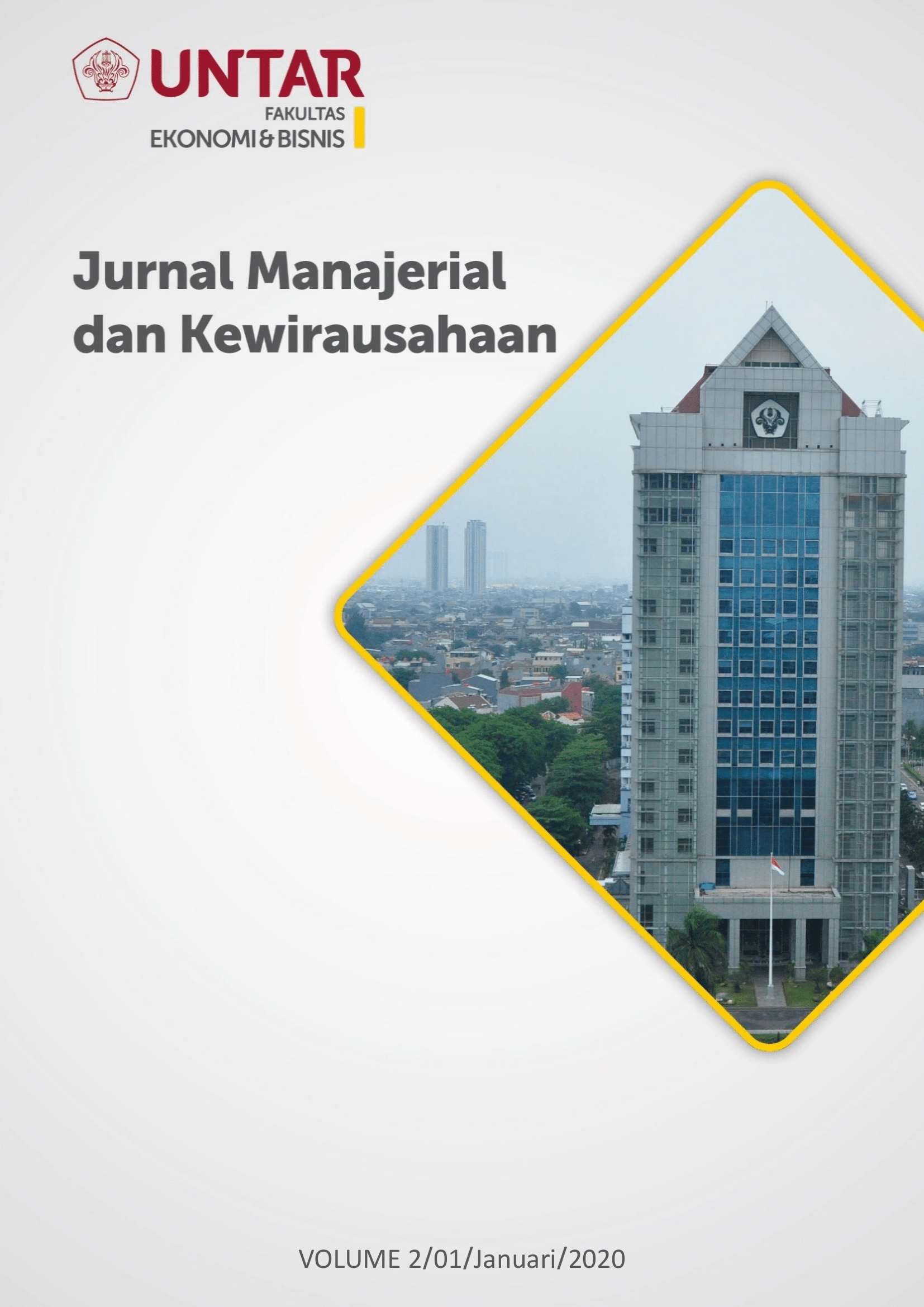Faktor Yang Mempengaruhi Continuance Intention GO-PAY Di Jakarta
Main Article Content
Abstract
The purpose of this research is to determine whether habit, perceived usefulness, perceived enjoyment, and perceived ease of use can affect the continuance intention of Go-pay in West Jakarta. The population of this research is people who have or have obtained service from Go-pay. In this reasearch using sample with purposive sampling techniques distributed to 100 respondents. The data analysis technique used is multiple regression analysis in the SPSS 25 program. The results of this research are habit, perceived usefulness, and perceived enjoyment that have a significant influence of continuance intention, while perceived ease of use has a non-significant influence of continuance intention.
Tujuan dari penelitian ini untuk mengetahui apakah habit, perceived usefulness, perceived enjoyment, dan perceived ease of use dapat mempengaruhi continuance intention Go-pay di Jakarta Barat. Populasi penelitian ini adalah orang yang pernah atau sudah menggunakan layanan dari Go-pay. Penelitian ini menggunakan sampel dengan teknik purposive sampling yang dibagikan kepada 100 orang responden. Teknik analisis data yang digunakan adalah analisis regresi ganda dalam program SPSS 25. Hasil dari penelitian ini adalah habit, perceived usefulness, dan perceived enjoyment memiliki pengaruh yang signifikan terhadap continuance intention, sedangkan perceived ease of use memiliki pengaruh yang tidak signifikan terhadap continuance intention.
Article Details
This work is licensed under a Jurnal Muara Ilmu Ekonomi dan Bisnis Creative Commons Attribution-ShareAlike 4.0 International License.,/p>
References
Amoroso, D., & Lim, R. (2017). The mediating effects of habit on continuance intention. International Journal of Information Management, 37(6), 693-702.
Bhattacherjee, A. (2001). An empirical analysis of the antecedents of electronic commerce service continuance. Decision Support Systems, 32(2), 201-214.
Chang, H. H. (2008). Intelligent agents technology characteristics applied to online auctions’ task: A combined model of TTF and TAM. Technovation, 28(9), 564-577.
Chong, A. Y. (2013). Understanding Mobile Commerce Continuance Intentions: An Empirical Analysis of Chinese Consumers. Journal of Computer Information Systems, 53(4), 22-30.
Eka, R. “Tren Perkembangan "Moile Payment" di Indonesia” 6 Maret (2018). https://dailysocial.id/post/perkembangan-mobile-payment-indonesia
Gan, C., & Li, H. (2018). Understanding the effects of gratifications on the continuance intention to use WeChat in China: A perspective on uses and gratifications. Computers in Human Behavior, 78, 306-315.
Gan,C. Liang, X. Yu, X. (2017) Continuance Intention on Mobile Social Networking Service : Examine the Effects of Habit and Gratifications. WHICEB 2017 Proceedings. 44.
Gardener. B (2015). A review and Analysis of the use of 'habit' in understanding, predicting and influencing health-related behaviour. Heatlh Psychology Review, Vol. 9, No. 3, 277-295.
Ghozali, Imam. (2016). Aplikasi Analisis Multivariete Dengan Program IBM SPSS 23 (Edisi 8). Cetakan ke VIII. Semarang: Badan Penerbit Universitas Diponegoro
Hamid, A.A. Razak, F. Z. A. Bakar, A. A. Abdullah, W. S. W. (2016). The Effects of Perceived Usefulness and Perceived Ease Of Use On Continuance Intention To Use E- Government. Procedia Economic and Finance, 35, 644-649.
Hsiao, K. L. (2017). What drives continuance intention to share location-based information? International Journal of Mobile Communications, 15(2), 210.
Kim, B. (2011). Understanding Antecedents of Continuance Intention in Social-Networking Services. Cyberpsychology, Behavior, and Social Networking, 14(4), 199-205.
Lin, X., Featherman, M., & Sarker, S. (2017). Understanding factors affecting users’ social networking site continuance: A gender difference perspective. Information & Management, 54(3), 383-395.
Rouibah, K., Abbas, H., & Rouibah, S. (2011). Factors affecting camera mobile phone adoption before e-shopping in the Arab world. Technology in Society, 33(3-4), 271-283.
Vedadi, A., & Warkentin, M. (2016). Continuance Intention on Using Mobile Banking Applications: A Replication Study of Information Systems Continuance Model. AIS Transactions on Replication Research, 2, 1-11.
Zhou, T. (2013). An empirical examination of continuance intention of mobile payment services. Decision Support Systems, 54(2), 1085-1091.



